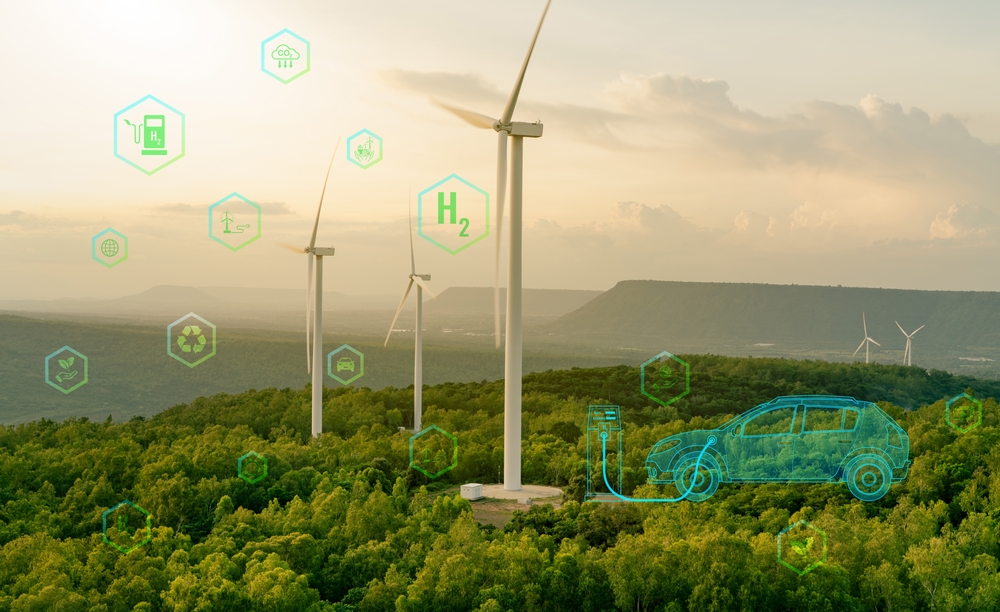
TotalEnergies, a French multinational, and HNH Energy, a consortium made up of Austrian companies and a Danish investment fund, are at key stages in the environmental assessment processes for their projects in the country.
The nascent green hydrogen industry—especially the most advanced projects that make up the US$43 billion portfolio of initiatives declared in the Environmental Impact Assessment System (SEIA)—is currently facing a critical moment.
August 29 is the deadline for HNH Energy, which is promoting a US$11 billion investment in the Magallanes Region, to submit its addendum in response to the first Consolidated Report on Requests for Clarifications, Rectifications, and/or Additions (Icsara).
This milestone is seen by the industry as a litmus test of the company’s ability to respond to more than 1,000 observations, as well as its willingness to move forward.
Meanwhile, next Wednesday will see the launch of TotalEnergies’ H2 Magallanes megaproject, the most ambitious to date with an investment of US$16 billion. Today marks the end of the public participation stage, which will take place following the publication of its first Icsara. The outcome of this latest process has sent mixed signals for this initiative and the industry as a whole.
Along with the objections to the report raised by agencies such as CONAF, National Monuments, and DGAC, the tone of the observations made by the Municipality of San Gregorio regarding the inadequacy of the Environmental Impact Study was noteworthy. “We will not accept a superficial assessment that underestimates the profound impacts on our connectivity, safety, traditions, and quality of life,” said Councilwoman Jeannette Andrade.
On one side, public sector sources think these comments are normal for projects of this scale: “It’s totally expected that a project this big will have a bunch of questions in the first consultation. I don’t think it’ll discourage anyone. Plus, we’re in a climate shaped by the Sectoral Permits Law, and the overall goal is to speed up investments,” said Magallanes Governor Jorge Flies.
On the other side, private sector folks point out that these early statements from local authorities don’t really match up with the central and regional government’s stated goal of strengthening the industry. This is happening with seven projects in the SEIA—three of them in Magallanes, where another seven are gathering info—out of a total of 77 proposed initiatives in the country.
“There will be at least three or four projects that will submit their addenda, and given the deadlines we have for evaluating these projects, they would be in a position to be approved during this year or early next year. There are several possible candidates,” said Marcos Kulka, executive director of H2 Chile, co-organizer of Hyvolution Chile 2025.
The risks
Decisions regarding the future of the sector in our country are being made amid intense global reorganization, marked by reductions in investment and the cessation of projects in Europe, the US, and Australia. At the same time, Asia remains dynamic, with major initiatives to support demand in India and the boom in China, with eight projects associated with methanol and ammonia production, Kulka pointed out.
“In this reshuffle, there are countries that are positioning themselves and will take advantage of the opportunity. This puts even more pressure on us, and we see it with our competitors. For example, Brazil, which moved to number one in the Latin American ranking by the consulting firm Hinicio, where Chile had always been, and Peru, where a project with the same ammonia production configuration as large developments in Magallanes has already been approved,” said Kulka.
Based on this assessment, he warned: “Despite public-private efforts and the government’s willingness, there is a great risk that this industry, with its US$40 billion portfolio, will ultimately fail if we do not do things right, if we get bogged down in endless project approval processes that make them unviable, and Chile definitively loses this opportunity. That is a real possibility.”
In this scenario with “investors willing to invest,” Salvador Harambour, executive director of H2V Magallanes, emphasized that “it is concerning that after four or five years of gathering information, establishing baselines, and conducting numerous studies with investments of tens of millions of dollars to bring your project into the system, and then without certainty as to whether submitting addenda to respond to inquiries from authorities or entities that will be sufficient or whether they may consider that even more studies are needed.”
According to him, the delays in Chilean environmental regulation “are causing us to lose competitiveness, and other countries will overtake us before we even lay the first stone.” Harambour emphasized that “what they call permisología is a burden, and we are testing the patience of investors, which is complicated.”
Source: Diario Financiero.